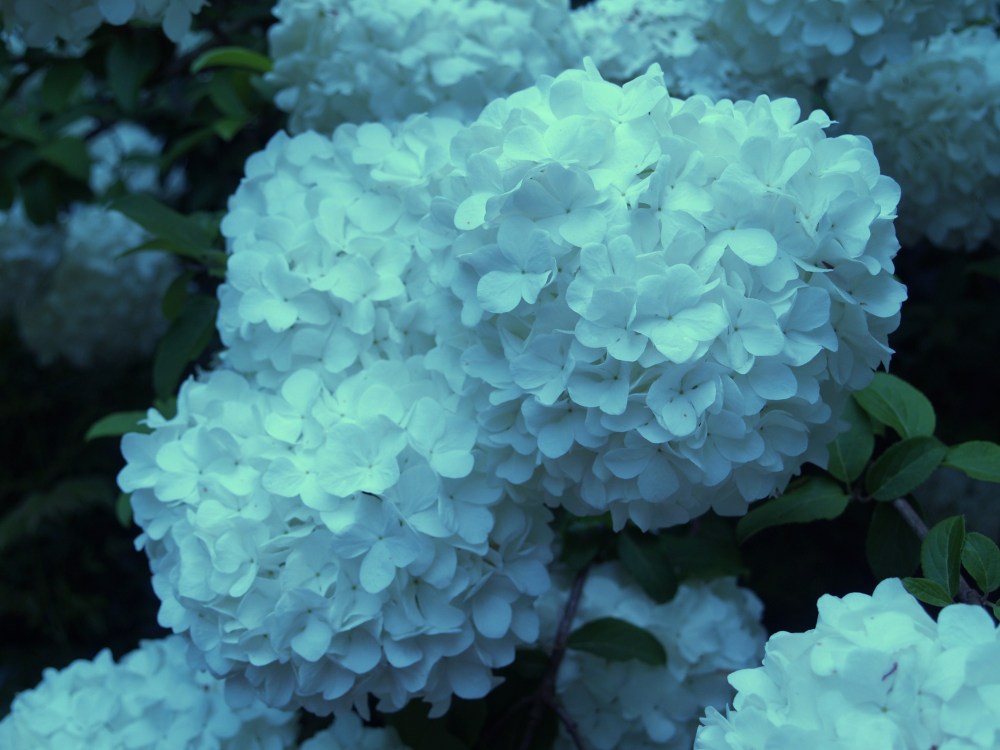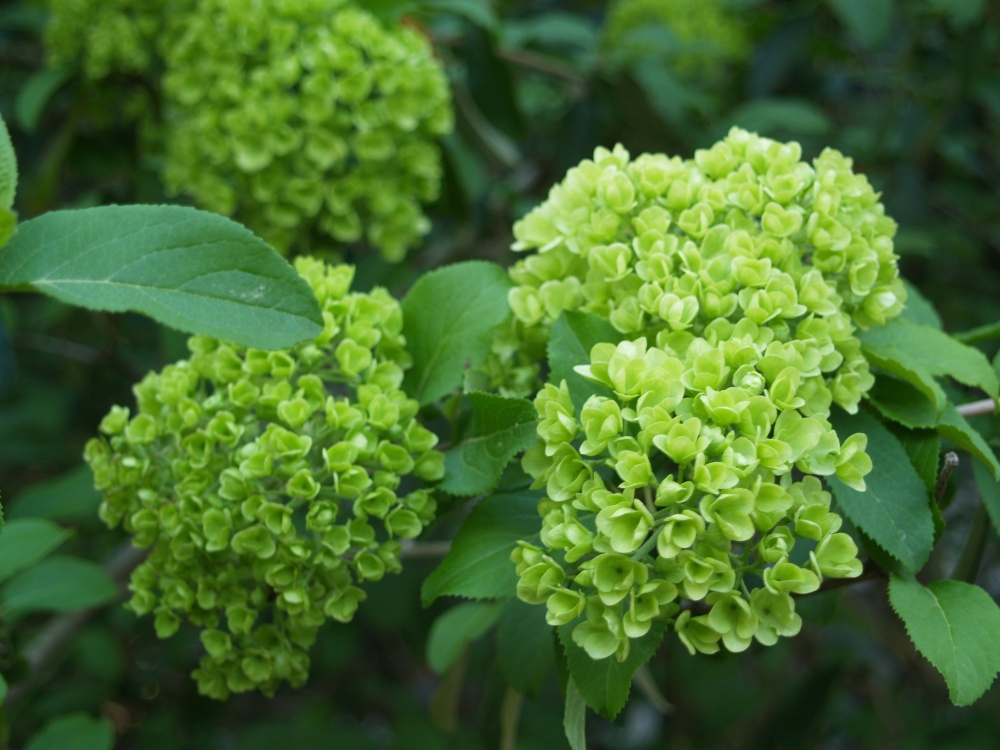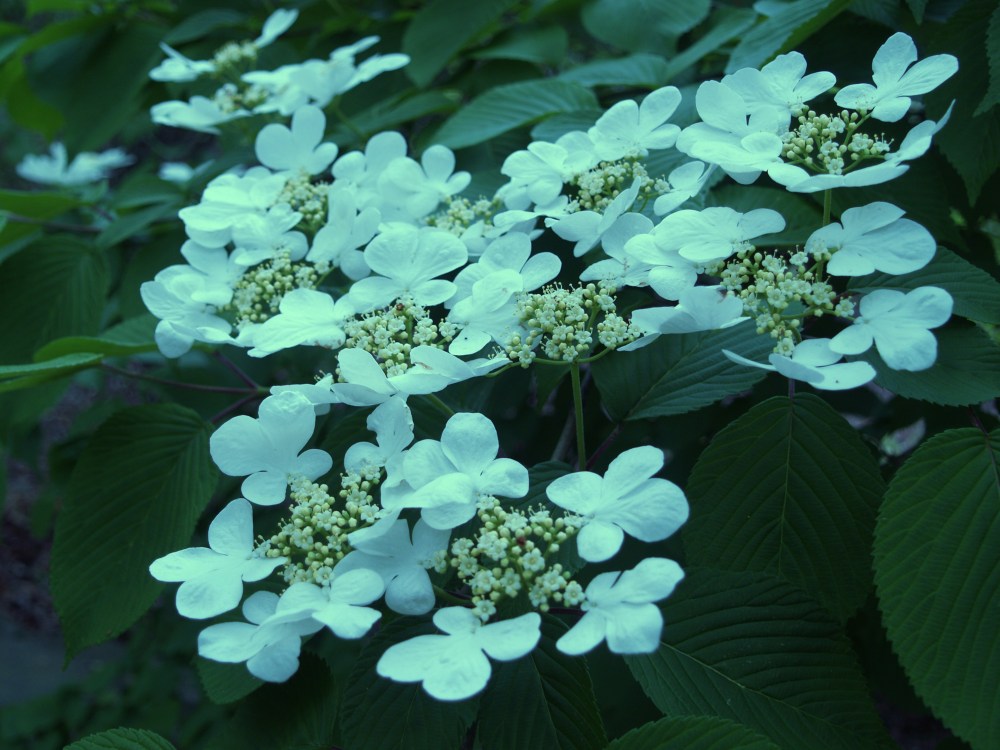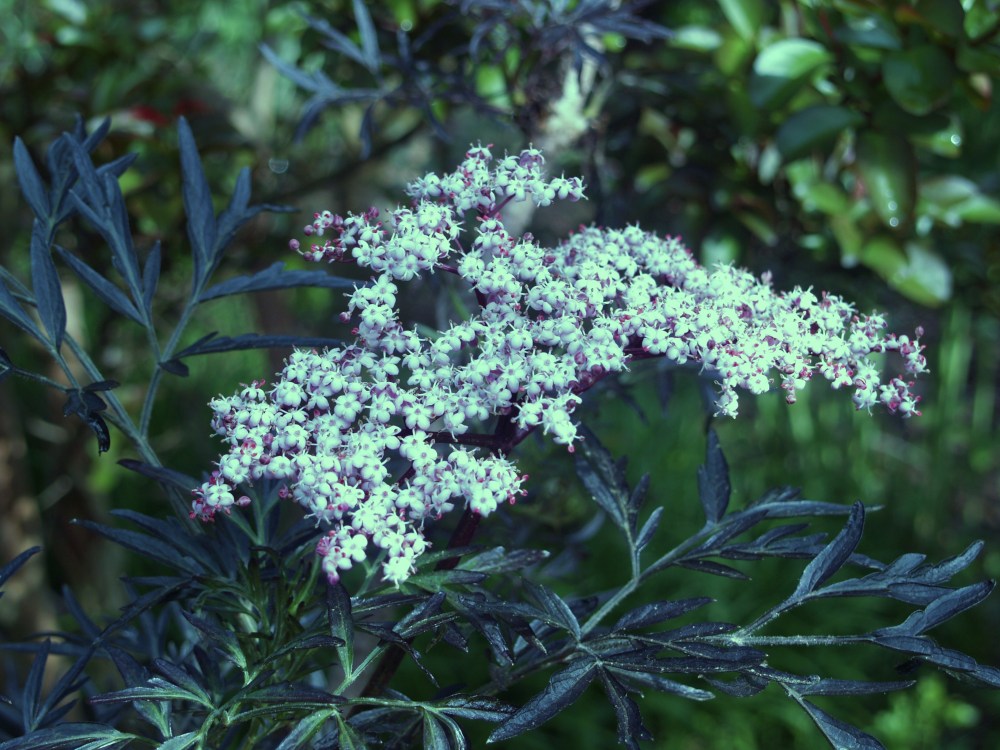I’ve promised my wife for several years that I’ll prune the Chinese snowball (Viburnum macrocephalum, below) that towers over the windows of our small library, but …. I can’t offer any excuses, I just haven’t done it (along with many other things I haven’t followed through on). The proper time to prune it is immediately after it’s flowered, and now it’s in full bloom and quite magnificent. I’m reluctant to prune anything back so drastically, though it is likely this tough viburnum would recover without any bother and flower next year as if nothing happened.
My wife has nothing against large shrubs. We have many, but the snowball bush covers two of the three windows of the small room, and a monstrous gold tipped yew covers the third. Even on the sunniest day this south facing room is dark as a dungeon, so cutting the viburnum down a bit is quite reasonable. So, maybe. But, I’ve ignored many reasonable requests (and even demands) in the past, so there are no guarantees.
The snowball’s flowers are huge white balls that ripen from light green in mid April (above) to a creamy white through much of May. When the blooms are wet from rain the branches bend to block the nearby path, and if my wife had ventured this direction she would certainly be back quickly with her pruners to clear the way. Fortunately, she hasn’t been through much of the garden for a while, so keeping the paths open has been left to my good judgment. Imagine that!
A bit further to the back along the garden’s wooded southern border are two or three Maresi doublefile viburnums (Viburnum plicatum f. tomentosum ‘Maresi’, above), though they could very well be ‘Shasta’ since there is little difference except one is more spreading and less upright. For years after they were first planted the spot was in nearly full afternoon sun, but now a serviceberry (Amelanchier canadensis) and smoketree (Cotinus coggygria) shade the viburnums so that their growth is much more open than it once was. In the heaviest shade the branches do not flower, but most branches still bloom and now are almost covered in flattened clusters of white flowers. I’m a little bit certain that a year ago ‘Maresi’ did not flower at all, but I’m probably mistaken since the neighboring plants are overgrown and my attention to detail isn’t what it used to be. People tell me all the time that their something-or-other didn’t flower this year, and usually I figure that they’re even less observant than I am.
I can verify that in shade the viburnums display little of the splendid autumn foliage color that occurs in more sun. In a proper environment ‘Maresi’ and ‘Shasta’ are big and beautiful, with white blooms for a month in the spring, dense foliage that is ideal for screening or for the back of a flowering border planting, and deep purple-red autumn foliage color.
The dark purple foliage of ‘Diabolo’ ninebark (Physocarpus opulifolius ‘Diabolo’, above) is pleasing through spring and summer, and the flowers contrast delightfully through May. The branching form of ninebark is tall and arching, so the shrub consumes a good bit of ground unless it is regularly chopped back (which I never seem to get around to). I’ve heard that some more compact growing ninebarks have been introduced, and if a plant half the size is available this should be quite a treasure. 
The Black Lace elderberry (Sambucus nigra ‘Black Lace’, above) is flowering now, and though the blooms are nice enough the deeply dissected foliage is its primary attraction. I have stuffed ‘Black Lace’ into a small space beneath a tall crapemyrtle, so it grows with an open branching habit, but I think that’s not far different from its form in full sun with plenty of space. This dark leafed elderberry benefits from regular pruning to keep a more compact form.
I’ve heard that northern gardeners use ‘Black Lace’ as a cold hardy substitute for Japanese maples, but I feel fortunate to garden in a climate where the elderberry is appreciated as a nicer than average shrub rather than a focal point.
I had not seen the black lace elderberry anywhere before but now I must have one! The viburnums looks great, too. I have a two-year-old Shasta that is not flowering this year, though it otherwise looks vigorous. I did uproot and move it last spring to make room for a forest pansy red bud, so maybe it focused on reestablishing itself last summer and did not produce flower buds?
One of your best blogs, I loved all the pictures. I especially liked the black lace elderberry! I love dark leaves and ones that are a great shape with the blossom, WOW. I will also have to get one! I like your blogs, I am a Master Gardener and I think what you write about is excellent, thank you. I live in Leesburg, VA and will be helping maintain our Demo garden at Ida Lee Park. Due to the darn budget, we lost our leader in the extension office, Debbie Dillion – a horticulturist. It was one of the most painful things in my life when the BOS voted against her. We will still carry on, and I’m sure she will find a job where she will be appreciated. She has the personality of being down to earth, but so packed with knowledge. My town of Leesburg also lost their horticulturist. I know this has nothng to do with you Dave, but some important people in our society have been socked. But Debbie, has been getting job offers so Loudoun County will one day regret this (BOS) but meanwhile Debbie will carry on with dignity. So will our Master Gardeners.
Also, Dave, what region are you in. I noticed that you mentioned in your area, you could grow some things without a problem unlike some places. Since I am a MG, I have learned about some trees that are not suitable that are a rage still to plant, the Leyland Cypress – a lifetime of 15 years but I was told before I was a MG, it was perfect. Also, the Bradford Pear was so used in many places in communities, sure they are a delight to see, but all it takes is a couple of storms and they come down on you. Just words to the wise. My favorite trees are the native Redbud, Crape Myrtle – (everywhere in WiIliamsburg), and cherry trees. I saw the apt complex that I live in in March and as a Master Gardener thought, oh, I can afford this place, but the landscaping compared to where I was was bleak. Well, this year, I found out I have a Wonderful Cherry tree that blooms right outside 2 windows., Plus, lots of Ornamental Grasses. To my delight, they have 2 rows of a Magenta Crape Myrtles on either side of a driving lane in front of our pool. Plus Black Eyed Susans, and Rudbecka’s – yellow/black eye. Now I love the place. It is so interesting, how landscaping can be done to improve your mood. I went from the same company’s apt community (one that was more upscale) with very nice plantings to one that was wilder, plus we have a golf course behind us. So it’s quieter. Quite lucky, I am.
Hi Dave,
I have loved the snowball viburnum for years now since I saw one at the nursery i frequent here in SC when I first moved here in 2008. It is on my list, but haven’t checked it off yet. They are beautiful!
As of yesterday I brought home a replacement that the nursery gave me for my twice failed Lavender twist weeping red bud. I brought home a Peggy Clark flowering apricot tree. Now I am totally frustrated on where to plant it as it can get much larger than the spot that I had the red bud and feel that the same spot may be cursed anyway LOL! From what I have researched it states that they can get 25 ft. tall and wide, but yet it states to plant near a walkway or deck. I have a side deck and would love to block neighbors backyard, but not sure how far to plant away from their fence and my covered deck… If I planted in front I really wouldn’t enjoy it much since I really wouldn’t see it unless I was pulling into garage or leaving home where I frequent the deck more. The woman at nursery just told me put in ground and cover with mulch or pine straw… Any suggestions would be appreciated since not a thing was mentioned either about amending the soil… I am pretty sure that you could always keep the tree trimmed to fit within a certain area also couldn’t you?
Have a great day!
I have plenty of experience jamming trees into spaces too small for their eventual growth, and eventually something has to go. The tree grows into its neighbors or blocks a path or patio, so the best practice is to give the tree enough room from the start. I think it is impractical to expect to regularly prune anything that grows taller than you can reach without professional assistance, so I’d advise planting in the area with more space.
For most soils, even heavy clay soils soil amendments are not required, but if you prefer, compost type amendments should be added to a mix of one part to four or five parts native soil. Very sandy soil might need a bit more. Be certain to plant the root ball a few inches above the soil level to improve drainage and to account for settling. The roots of apricots are sensitive to wet soils, so planting high helps to keep the roots on the dry side.